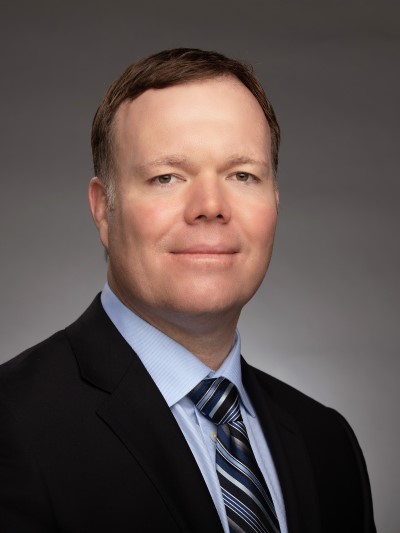CIOs plan big investments in EHR optimization and pop health IT

Photo: David Sacks/Getty Images
The electronic health record is the foundational piece of health information technology for most hospitals and health systems.
Chief information officers and other health IT leaders depend on the data from their deployed record systems, and most keep EHR optimization top of mind each budget season.
Population health management platforms are another essential technology and depend on finely-tuned EHRs to work optimally.
More CIOs are investing in population health systems in conjunction with their clinical teams to help keep patients healthy – while managing the quality and cost imperatives of value-based care.
Despite the various pronouncements over the years of a new "post-EHR" era, the ongoing operation of electronic health records and pop health tools still demand significant spending. But how much investment? And where should those dollars be allocated?
For the fifth installment in Healthcare IT News' feature series, "Health IT Investment: The Next Five Years," we asked eight health IT leaders to discuss their spending plans as they look toward the near-term future of EHRs and pop health.
This ongoing series offers in-depth interviews with CIOs and other technology leaders to learn about the priorities they set with their investments in six categories: AI and machine learning; interoperability; telehealth, connected health and remote patient monitoring; cybersecurity; electronic health records and population health; and precision medicine and emerging technology.
Click here to access all the feature articles currently available.
The eight health IT leaders we spoke with for this installment are as follows:
- Cara Babachicos, CIO at South Shore Health, a health system based in Weymouth, Massachusetts.
- Dr. Samit Desai, chief medical information officer at Ascension, a national health system operating more than 2,600 sites of care in 19 states and the District of Columbia.
- Dr. Shaun Grannis, vice president for data and analytics at Regenstrief Institute in Indianapolis.
- Matt Hocks, chief operating officer at Sioux Falls, South Dakota-based Sanford Health, whose four-state footprint includes both payer and provider organizations.
- Dr. J. Michael Kramer, chief medical informatics officer at OhioHealth, based in Dublin, Ohio.
- Mike Mistretta, CIO at Virginia Hospital Center in Arlington.
- B.J. Moore, CIO of Providence, a health system that operates 52 hospitals across seven states – Alaska, Montana, Oregon, Washington, California, New Mexico and Texas.
- Michael Restuccia, CIO at Philadelphia-based Penn Medicine
An all-Epic environment
The massive Providence will complete its journey to an all-Epic EHR environment this quarter.
"EHR is only step one of 10," Moore said. "So, how do we optimize that environment? How do we simplify the experience for caregivers? How do we get better insights from patients? How do we use the standard EHR? The EHR helps us act as a single health system versus a collection of 51 hospitals. And so we will evolve there.
"We're increasing the investment in population health work."
B.J. Moore, Providence
"And then for population health, we've got these foundational items in place, so population health will continue to be a focus," he continued. "I don't own population health, only the foundational pieces that my team provides to support that initiative. But I know we're increasing the investment in population health work."
Doubling practice volumes in the next 5 years?
"We are just beginning to dip our toe in the water of population health as it hasn't been a priority with our population or payers thus far," said Mistretta of Virginia Hospital Center. "Most of our primary care practices already are designated PCMH [patient-centered medical home] with key players, but the real push now is to coordinate care from the practice to the hospital and back to the practice.
"We recently hired a population health coordinator who will have primary responsibilities to monitor and place high-risk patients with social services and coordinate follow-up care as appropriate," he added.
"We recently hired a population health coordinator who will have primary responsibilities to monitor and place high-risk patients with social services and coordinate follow-up care as appropriate."
Mike Mistretta, Virginia Hospital Center
From the EHR perspective, the organization will continue to build out social determinants of health and implement focused disease registries for those it wishes to prioritize.
"We also are starting to really dive into health maintenance campaigns and starting to examine the development of specific disease registries," Mistretta said. "We still have a lot of work to do to put this information once gathered into an operational workflow so it becomes meaningful.
"Selling this type of care again hasn't been hard once we define a business case, but it remains to be seen how deep we will be able to dive into pop health without a well-structured case," he continued. "We do see this as a growth opportunity as we expand our ambulatory services in the coming years that can possibly double our practice volumes in the next five years with the right business case. Right now, it is still a little early to tell exactly where this is going to go in our market."
Pushing EHRs and pop health forward
Among the various training, mentorship and fellowship programs Regenstrief Institute participates in and leads, the institute and the Indiana University Fairbanks School of Public Health are home to the Biomedical Informatics and Data Science Research Training Program in public and population health informatics, funded by the National Library of Medicine.
"The specific Regenstrief-FSPH program is known as the Indiana Training Program in Public and Population Health Informatics," said Grannis of Regenstrief Institute. "The highly regarded program prepares graduate students and postdoctoral fellows to work in a broad spectrum of entities in the healthcare industry and academia, as well as for local, state and federal public health departments.
"The Regenstrief Teaching EMR allows students to obtain realistic experience with health IT. The program is in use at 12 schools around the country, and we hope to expand that reach."
Dr. Shaun Grannis, Regenstrief Institute
"These trainees fill a need for informaticians who can design, validate and implement solutions for organizations key to the maintenance and improvement of human health," he added.
The information that exists in EHRs can be hugely helpful with population health.
"We are invested in making it accessible and useful to clinicians and to administrators who make decisions critical to provision of the best care possible," he said. "For example, our Health Dart application gathers relevant data and displays it for the provider to aid in decision-making and free up more time to be spent with patients.
"Regenstrief also is working to train the next generation of doctors in the use of EHRs," he added. "Medical students get very little hands-on experience with the technology, yet it is a large part of everyday workflow. The Regenstrief Teaching EMR allows students to obtain realistic experience with health IT. The program is in use at 12 schools around the country, and we hope to expand that reach."
A boost to value-based care
In past years, Penn Medicine has made significant investments in the design, build and deployment of its integrated electronic health record for the inpatient, ambulatory and home care environments.
"This investment already has enabled population health efforts and positioned the organization to further advance its value-based care initiatives," said Restuccia of Penn Medicine. "Going forward, we will look to further enhance these capabilities and use our advanced data analytics platform to identify and address areas of clinical opportunity."
"This investment already has enabled population health efforts and positioned the organization to further advance its value-based care initiatives."
Michael Restuccia, Penn Medicine
Kramer of OhioHealth believes their AI, interoperability, virtual health, digital outreach and analytics all are part of their EHR/population health strategy.
"Of the 17 models that are part of our AI program, four of them will contribute to identifying patients at risk," he explained. "These have become foundational tools for payers. They will become foundational for health systems working to identify risk and clinical care opportunities.
"Of the 17 models that are part of our AI program, four of them will contribute to identifying patients at risk."
Dr. J. Michael Kramer, OhioHealth
"Examples that we are working on include risk of ED or hospitalization, risk of readmission, no-show and identification of complex chronic conditions for care," he added.
Population health in the spotlight
South Shore Health has made significant investments in electronic health records and population health platforms.
"Like most organizations, we need to ensure that we have seamless solutions that work well together," said Babachicos of South Shore Health. "We also need to ensure these tools offer great patient engagement alternatives and that they can be customized to suit our needs while providing interoperability with the major electronic health record system.
"The key question over the next few years will be how to leverage the population health systems to understand our patients and use these systems as a mechanism to proactively reach out to the patients in new ways appropriate for the support of their care."
Cara Babachicos, South Shore Health
"The key question over the next few years will be how to leverage the population health systems to understand our patients and use these systems as a mechanism to proactively reach out to the patients in new ways appropriate for the support of their care," she added.
Hocks at Sanford Health says they are focused on keeping people healthy, well and out of the hospital by providing patients with innovative services to improve their health and manage chronic conditions.
"We have partnerships with technology vendors to help our providers coordinate care across clinics and medical facilities and to connect our patients with community resources and social services that support health and well-being outside of the hospital and clinic settings," he said.
"We have partnerships with technology vendors to help our providers coordinate care across clinics and medical facilities and to connect our patients with community resources and social services that support health and well-being outside of the hospital and clinic settings."
Matt Hocks, Sanford Health
"Technology advances in both hardware and software are in many respects the backbone to providing high-quality care to patients in rural communities," he continued. "For example, because of the digital infrastructure we have in place, Sanford providers can deliver behavioral health services to people living in remote areas who otherwise would need to travel up to three hours one way just to see a specialist."
Sanford Health also is exploring new technology that would allow clinicians to use two-way texting to routinely check in with patients with chronic conditions. This would be available to all patients, regardless of their ability to own or use a smartphone.
A proactive approach to pop health
A proactive, coordinated approach to managing population health is a critical element of Ascension's strategic plan, which accelerates its work to deliver improved health outcomes for the individuals and communities it serves.
"Our clinical, technology and experience teams have been working together to lay the foundation for a holistic, system-wide solution for population health, and we will continue to make significant investments in this area," said Desai of Ascension.
"Among other things, we moved our data to the cloud to make it easier to access and collate to give us insights into our patients' care needs," he continued. "We are implementing a care coordination platform to enable performance analytics to help identify groups and needs within defined populations, allowing for program creation as well as expertly coordinate and manage the care of these defined populations."
The organization also is reimagining its interoperability strategy to ensure it both understands where patients have been and what happens across the continuum.
"Our customer relationship management system will serve as our engagement engine, integrating with both the care coordination platform and the electronic health record systems to both notify clinicians of care gaps and nudge patients with outreach," he said.
"We are strengthening our analytics capabilities in stratification and risk assessment of our population, payer quality and risk adjustment to better understand the medical trends and continuity of care to better optimize the care delivery for the population," he concluded.
Twitter: @SiwickiHealthIT
Email the writer: bsiwicki@himss.org
Healthcare IT News is a HIMSS Media publication.































